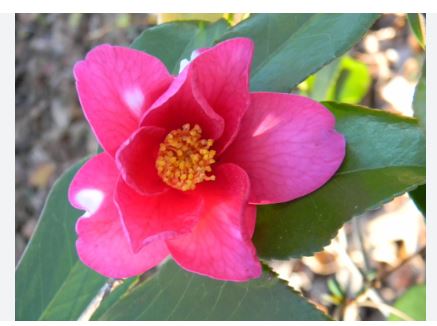
Camellia oleifera, also known as the tea oil camellia or huangshan oil camellia, is native to southern China. It has been cultivated in China for over 2,500 years, primarily for its oil-rich seeds. Historically, the oil extracted from its seeds has been used in Chinese cooking, traditional medicine, for lighting lamps, and as a base for cosmetics and soaps. Its significance in Chinese culture is reflected in ancient texts where it’s praised for both its culinary and medicinal properties.
While its use was traditionally confined to China, in more recent times, interest in Camellia oleifera oil has spread globally due to its health benefits and sustainability as a non-tropical vegetable oil source.
Characteristics
- Growth: Camellia oleifera grows as a shrub or small tree, reaching up to 10 meters in height. It’s known for its robust growth even in less-than-ideal conditions.
- Leaves: The leaves are evergreen, glossy, and have a leathery texture, typical of camellias. They are elliptic to ovate, often with serrated edges.
- Flowers: While not as showy as some ornamental camellias, it produces white flowers with yellow centers, usually in autumn. These flowers are smaller, around 3-5 cm in diameter, and not typically the reason for its cultivation.
- Seeds: The real value lies in its seeds, which contain 20-30% oil by weight. Each fruit (a capsule) contains several seeds which are harvested after maturation.
Cultivation
- Climate: Camellia oleifera thrives in temperate to subtropical climates, typically USDA zones 7-9. It’s more cold-tolerant than many other camellias, withstanding temperatures down to about -10°C (14°F) if acclimated.
- Soil: Prefers well-drained, slightly acidic to neutral soils. It’s somewhat adaptable to various soil types but performs best in loamy or sandy soils.
- Sunlight: It does well in full sun but can also grow in partial shade. Full sun exposure generally results in better fruit production.
- Watering: Requires consistent moisture, especially during dry periods, but like all camellias, it doesn’t tolerate waterlogging.
- Pruning: Pruning is necessary to maintain shape, promote fruiting, and remove dead or diseased wood. It’s typically done after seed harvest.
- Fertilization: Application of organic fertilizers or slow-release fertilizers suitable for acid-loving plants can enhance growth and seed yield.
- Pests and Diseases: Generally resistant to many pests, though it can be susceptible to scale insects, tea mosquito bugs, and fungal diseases. Good air circulation and avoiding overhead watering can mitigate disease issues.
- Harvesting: Seeds are harvested when the capsules turn brown and begin to split open. They are then dried, often roasted, and pressed for oil.
- Oil Extraction: After seeds are harvested, they are usually roasted to improve oil quality and flavor, then pressed to extract oil. The oil is light, with a mild nutty flavor, rich in oleic acid, vitamin E, and antioxidants.
- Economic and Environmental Importance: Beyond its culinary and medicinal uses, Camellia oleifera is increasingly appreciated for its sustainability. Its cultivation supports biodiversity, with minimal ecological impact compared to other oil crops like palm oil. The plant’s leaves and residual cake after oil extraction can be used as animal feed or organic fertilizer.